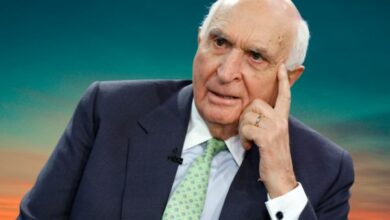India’s present and rapid increase of Covid-19 cases are posing an urgent threat to the country’s FY22 growth aspirations. If this second wave is not brought under control swiftly, the economic issues will become even more difficult. The more time the second wave lasts, the more severe the economic effect on India will be. There will be a race between the rate of COVID-19 vaccination and the spread of the virus.
The economic impact of the second wave
Both the RBI and the IMF updated their estimations of India’s growth forecasts for FY22 in the first week of April 2021. The RBI has forecasted 10.5 % real GDP growth for India, whereas the IMF has amended its prior projection upwards, predicting 12.5 % growth, which is 2% more than the RBI’s prediction. Following the decline of 8 % in FY22, these exceptionally high real GDP growth rates are mostly due to a substantial base effect. India’s forecast growth rate of 12.5 % in FY22 is significantly greater than that of other major economies across the world, with China expected to expand at 8.4%.
If the current second wave of COVID-19 is not brought under control shortly, their growth forecasts may be seriously jeopardized. Much will be determined by the rate at which India’s population is vaccinated as a whole. Meanwhile, owing to the devastating effects that COVID – 19’s second wave is now having on the Indian economy, it appears that the planned recovery in 1QFY22 may be slowed.
Also Read: Ronaldo replaces Coca-Cola with water; The company suffered a loss of $4 Billion
Economic Challenges
In March 2021, the PMI manufacturing index fell to a seven-month low of 55.4. In March 2021, PMI services dipped to 54.6, down from 55.3 in February 2021. In February 2021, IIP shrank by 3.6 % marking the second consecutive decrease in the last quarter of FY21. In February 2021, core IIP decreased by 4.6 % compared to a gain of 0.9 % in January 2021. CPI inflation reached 5.5 % in March 2021, reflecting supply-side restrictions and an increase in global petroleum and commodity prices, while WPI inflation reached a 96 month high of 7.4.%.
The unfavorable impact of COVID-19’s second wave is expected to challenge the RBI’s predicted GDP growth of 26.2 % for 1QFY22 which is predicated on a strong base effect. The upcoming events are going to have a major impact on numbers since the work of the businesses is dependent on them. In general, the impact of news on currencies in Forex since it defines the future activities and decisions on buying or selling is dependent on them, thus the currency rate changes. For India, in this economic crisis, it is very important to keep the efficient rate with the USD and manage the deterring factor as efficiently as possible. According to some estimates, this influence would reduce predicted growth by 5-7 %. This might mean that the annual growth rate for FY22 may have to be cut down by around 1%. From a sectoral standpoint, the same industries are expected to suffer more in the second wave than they did in the first.
Construction, trade, hotel, transportation, and related services are among these. Fiscal policy, which directly affects the public administration, defense, and other services sector, can play a critical role in reducing the negative effects. It may be prudent for the federal and state government to frontload their projected expenditure increase, particularly in the infrastructure sectors, in order to maintain the level of overall demand. Any increase in the federal government’s already planned fiscal deficit of 6.8 % of GDP in FY22 may not be necessary at this time. However, the situation may be regularly evaluated and if private demand is found to be weakening as a result of covid 19 ‘s influence, a more active role for government involvement may become inevitable.
Lessons from the first wave
As a result of the effects of COVID-19 FY21, India’s growth slowed as did that of all other nations. When the scale of this erosion is compared to a country’s long-term growth record, India’s situation does not appear to be as dire as it does when the size of actual GDP shrinkage is compared. In reality, India is merely the second-largest country behind China.
Mining and quarrying, building and trade, transportation, and other sectors are the weakest performers when it comes to intra-sectoral effects on production growth in India. Apart from exports, gross capital formation and private final consumption spending were shown to be the most sensitive demand sectors of GDP. And in terms of policy interventions, India’s fiscal and monetary policies appear to be less active than those of other major world economies. Given that the second wave of Covid-19 will have the greatest influence on economic performance in 1QFY22, it may be advantageous to frontload projected capital expenditures for FY22 in this quarter.
India’s future economic strategy may benefit from some of the lessons learned. First, a decentralized and diffused growth strategy, in which industrial activities are encouraged to settle outside of major urbanized centers, such as is smaller towns, the peripheries of major urban centers, and corridors connecting two or more major urban centers may provide a more robust development profile in dealing with the pandemics.
Also Read: Adani rubbishes account freeze rumors, but the NDSL site showing something else
Second, the Atmanirbhar Bharat concept looks to be well-timed, since reducing reliance on global supply chains in pandemic conditions may be advantageous for avoiding economic harm. Third, expanding India’s capacity to provide health service as part of overall infrastructure growth should be prioritized to strengthen the country’s ability to deal with COVID-19 type health shocks.
Summing It Up
Finally, to sum up, while India’s policy makers’ attention is currently concentrated on dealing with Covid-19 in general and its second wave in particular, it would be beneficial to put India’s medium to long-term economic prospects and potential at the forefront of economic policy. MOst inter-country interactions are anticipated to shift dramatically in the post-covid 19 economic world. All efforts should be taken to attract foreign investments to India so that the country can play a significant role in global supply chains. India will have to compete for investment with China, the United States, and the European Union. In this context, India’s CIT reforms, which aim to make the CIT rate more competitive, would be crucial.
Both the central and state governments, as well as their public sector firms and the private sector, are expected to participate in India’s plan. If necessary, the central government may retain its fiscal deficit considerably over the existing FRBM threshold of 3% of GDP. According to the Reserve Bank of India, the total budget deficit of the federal and state governments is expected to be 10.8 %. According to early indicators, the federal government’s tax receipts in FY21 may be higher than the amended projection. Given the better revenue performance prospects, the central government could do well to frontload its scheduled FY22 capital investment in 1QFY22 in order to reduce the negative economic impact of Covid-19’s second wave.

 David Copperfield Net Worth 2024: How Much is the Novel by Charles Dickens Worth?
David Copperfield Net Worth 2024: How Much is the Novel by Charles Dickens Worth? Noel Biderman Net Worth 2024: How Much is the Canadian Internet entrepreneur and business professional Worth?
Noel Biderman Net Worth 2024: How Much is the Canadian Internet entrepreneur and business professional Worth? Adam Selipsky Net Worth 2024: How Much is the CEO of Amazon Web Services, Inc. Worth?
Adam Selipsky Net Worth 2024: How Much is the CEO of Amazon Web Services, Inc. Worth? Ken Langone Net Worth 2024: How Much is the American Businessman Worth?
Ken Langone Net Worth 2024: How Much is the American Businessman Worth? Anthony Geisler, Xponential Fitness Founder and CEO Suspended “Indefinitely” Amid Fraud Allegations
Anthony Geisler, Xponential Fitness Founder and CEO Suspended “Indefinitely” Amid Fraud Allegations Navigating Forex Brokers: Choosing the Right Partner for Your Trading Journey
Navigating Forex Brokers: Choosing the Right Partner for Your Trading Journey Navigating the Complexities of MT4: A Comprehensive Guide for Beginners
Navigating the Complexities of MT4: A Comprehensive Guide for Beginners Melinda Gates Resigns As Co-Chair of Gates Foundation, Bill Gates Responds
Melinda Gates Resigns As Co-Chair of Gates Foundation, Bill Gates Responds